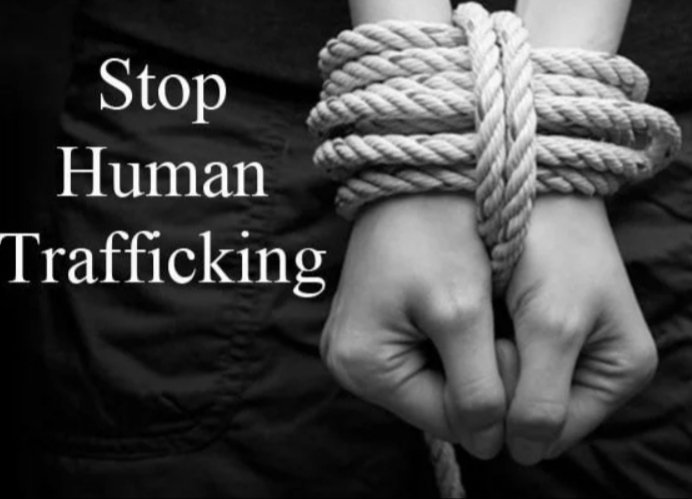
Slavery is alive and well, living under an assumed name of Human Trafficking. A new report focusing on Rwanda makes recommendations the report’s authors believe will add to the weapons available to policy makers, and law enforcement agencies in combating the crime.
The Report, Understanding Human Trafficking in Rwanda: Causes, Effects and Impact, is the findings of a two year research exercise by Never Again Rwanda.
It was commissioned by the International Organisation for Migration (IOM), with the support of USAID, and the Rwanda ministry of justice, among others.
Although Rwanda is singled out for praise, by among others, the IOM, for effective approaches to tackling Human Trafficking, there is an acceptance that more research was needed to better understand the extent, and nature of the crime, specifically within Rwanda.
The aim of the report is to provide evidence based recommendations to policy makers, law enforcement agencies, and others involved in tackling Human Trafficking.
Since 2014, much has changed within Rwanda, in the way that Human Trafficking is confronted.
In cooperation with the United States of America, there is increased training of personnel in almost every agency at the forefront to fighting Human Trafficking, including police, immigration officials, and judges.
Protocols have been established for immigration officials, for instance in how they interview Human Traffickers and their victims, with officials submitting weekly case reports.
There is a police help line, and awareness campaigns have been stepped up. Where needed, legal frameworks have been put in place to close what gaps exist. Since last year, the existing laws against Human Trafficking were strengthened when the Trade in Persons Act (TIP) was passed by Parliament.
The new law provides greater protection for victims, while toughening up sanctions against anyone suspected of involvement in the crime. It is now for instance a criminal offence not to report suspected cases of Human Trafficking.
Businesses such hotels and guest houses which fail to report such cases risk prosecution.
And the law is transnational. Rwandan citizens can be prosecuted in Rwanda, irrespective of where the crime was committed, and foreign nationals who are caught in Rwanda, will be prosecuted in the country.
All these changes have led to a rise in the numbers of Human Trafficking related crimes, as what was once a largely hidden problem becomes less, and less underreported.
In 2014, nineteen cases were reported by the Directorate if Immigration and Emigration (DGIE).
By 2015, cases had risen to thirty-four, and by last year, reported cases stood at 208.
One of the biggest problems Rwanda faces is the low number of prosecutions. The main reason cited is the difficult in gathering evidence.
Victims are too often reluctant to give witness, while traffickers are often beyond reach in other jurisdictions. Victims are for instance routinely urged to delete any digital communication between them, and those who prey on them.
The report finds that Rwanda is mainly a transit point, with most victims coming from neighbouring countries. The most vulnerable groups are from Burundi, which constitute almost 63% of cases.
The Democratic Republic of Congo (DRC) has the next largest number at 15%, with Rwanda accounting for 13% of cases.
Girls and young women are most targeted, making up almost 78% of reported cases.
Ironically, it is Rwanda’s success as a well governed country that makes it particularly popular with Human Traffickers, as a transit point.
“If you are trafficking anxious young people” says lead researcher Eugene Ntaganda, “you want them to be as comfortable as possible, otherwise they become too emotional publicly and cause you problems. In Rwanda, you have a good infrastructure, comfortable buses, good roads, there is order, and virtually zero corruption at airport immigration.”
“As long as you make sure that the victims have been well instructed to lie, because the other problem is that Rwandan officials ask questions, and if they suspect trafficking, will send people back to their respective countries,” he added.
Conversely, poor or non existent enforcement of the law in neighbouring countries, mean that Human Traffickers can operate in almost complete safety in neighbouring countries.
The report finds for instance that neighbouring Uganda is a particular favourite of traffickers. With no visa requirements between countries within the East African Community (EAC) traffickers find it easy to lure victims from areas in Rwanda, like the Northern Province, which boarder Uganda.
The ease of border crossing is yet to be matched by close cooperation between law enforcement agencies in the EAC.
This added to the helping hand from corrupt officials, means that traffickers will continue to operate comfortably in neighbouring countries, beyond the reach of Rwandan law enforcement.
Rwanda is fighting a global problem. According to a 2014 report from the International Labour Organisation (ILO) Human Trafficking is worth $150 billion a year.
Traffickers can sell a human being for between $40-50,000. Within the East African Great Lakes region, a trafficker can count on $400 for every human being he or she can get on Ugandan soil.


